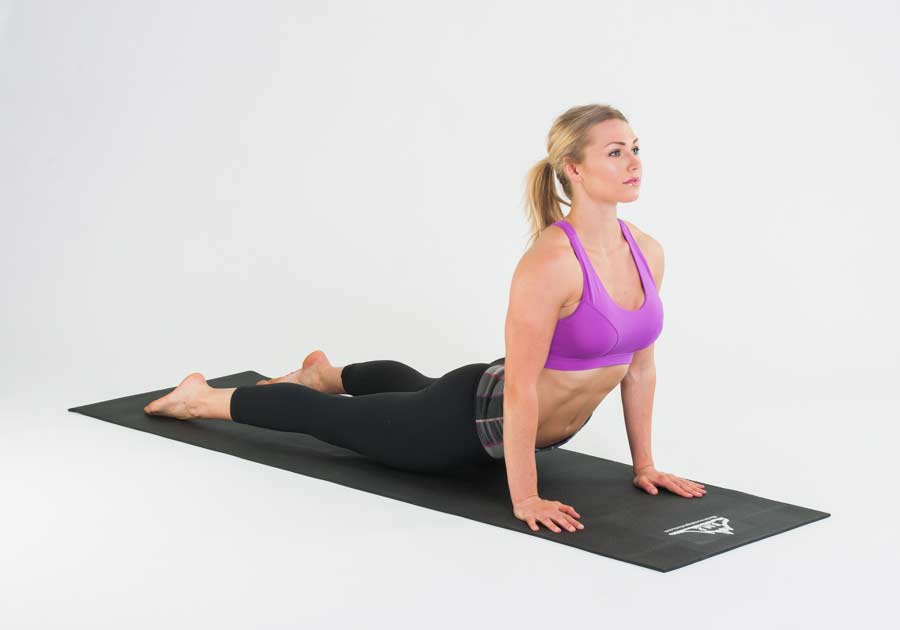
When it comes to stress, the stats are scary.
Research suggests that as many as 74% of women and over 80% of men live under continuous stress caused by too much work and not enough rest.
The ideal would be to wave a magic wand and reduce our workloads by 50%, take Friday’s off and still have enough money to pay for a monthly spa retreat.
But, until that becomes a reality, there’s a cost-effective alternative that can easily slot into your day: yoga.
While the list of benefits of regular yoga practice is a long one, one of the most exciting advantages is its ability to improve your mental health. Multiple studies show that yoga can help regulate the body’s stress response, from increased feelings of relaxation to reduced irritability and tension.
When triggered, our bodies go into fight or flight mode which could cause physiological changes such as a rise in blood pressure and an increased heart rate.
Among the many mental health benefits is the potential to build resilience for dealing with stressful situations, thereby reducing future stress. At the same time, it can relieve tension caused by the pressures that we’ve already encountered and return us to a more present, peaceful state.
Want in?
Here are the top five yoga poses to alleviate stress:
Pose 1 – Sukhasana (Easy pose) with Forward Bend
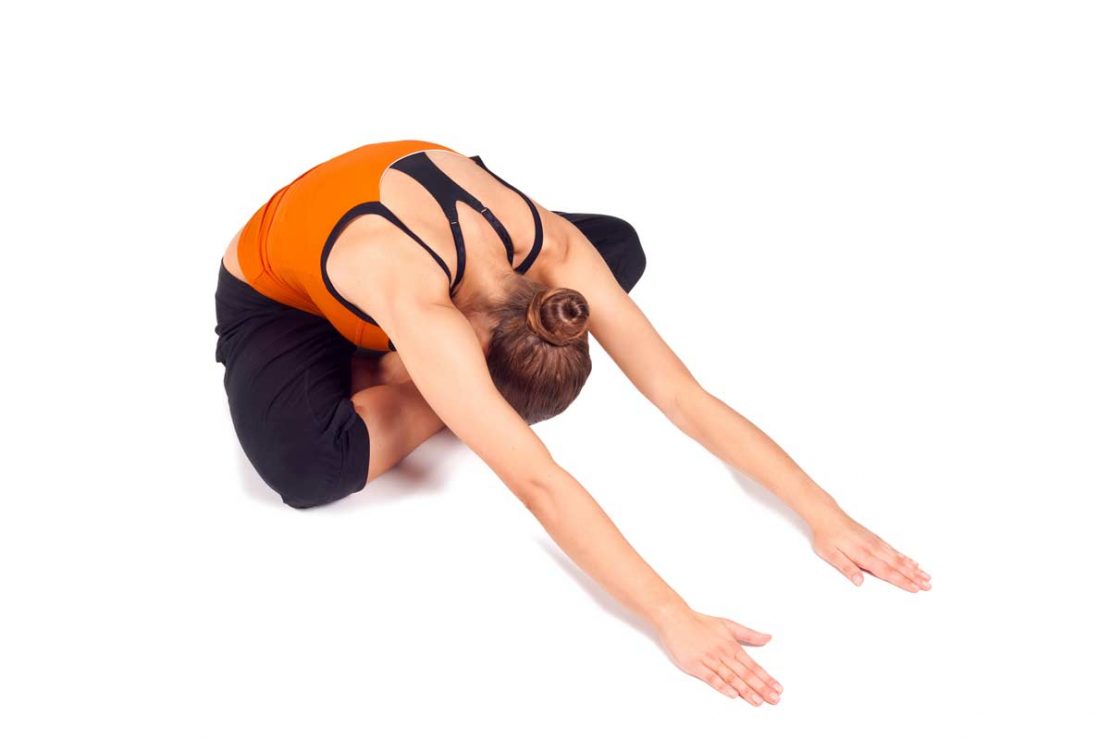 How to do it:
How to do it:
Start by sitting in Easy Pose (basic sitting position) with your right shin crossed over your left. Bend forward slightly, keeping your back straight. Stay in this position for five breaths, then cross your left shin over your right and repeat.
Why it works:
Sukhasana helps to lengthen your spine and open your hips. By adding a forward bend, you can increase the exhale, which elevates the relaxation response, helping you calm down, reduce anxiety and decrease your mental and physical exhaustion.
Pose 2 – Balasana (Child’s Pose)
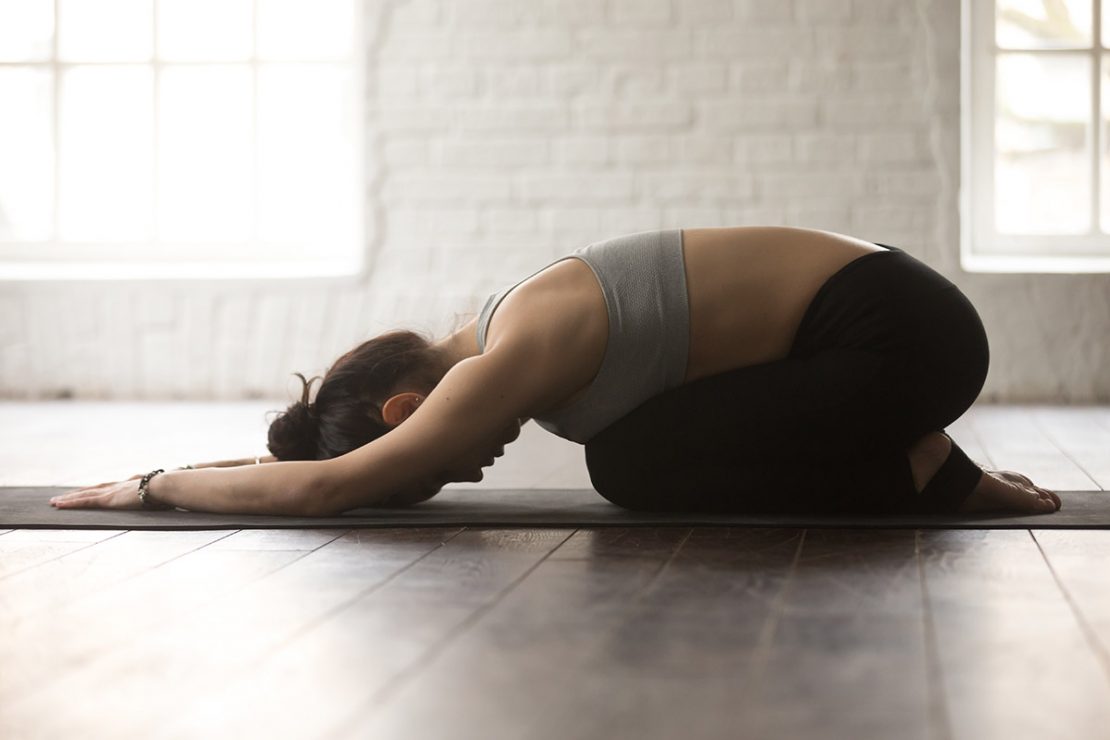
How to do it:
Start on bent knees and fold over, stretching your arms in front of you, palms down. Push your shoulders down and away from your ears, and shift your weight so that it’s over your feet. Take ten deep breaths. For a variation to increase the stretch, place yoga blocks under each elbow, near the front of the mat.
Why it works:
Child’s pose is a classic resting pose that helps calm a racing mind, releases tension from the neck and shoulders, and offers a good stretch for the thighs and hips. It’s also beneficial for your lymphatic system and nervous system. To make the pose more comfortable and restorative in nature, place a pillow under your stomach.
Pose 3 – Uttanasana (Standing Forward Bend) with Shoulder Opener
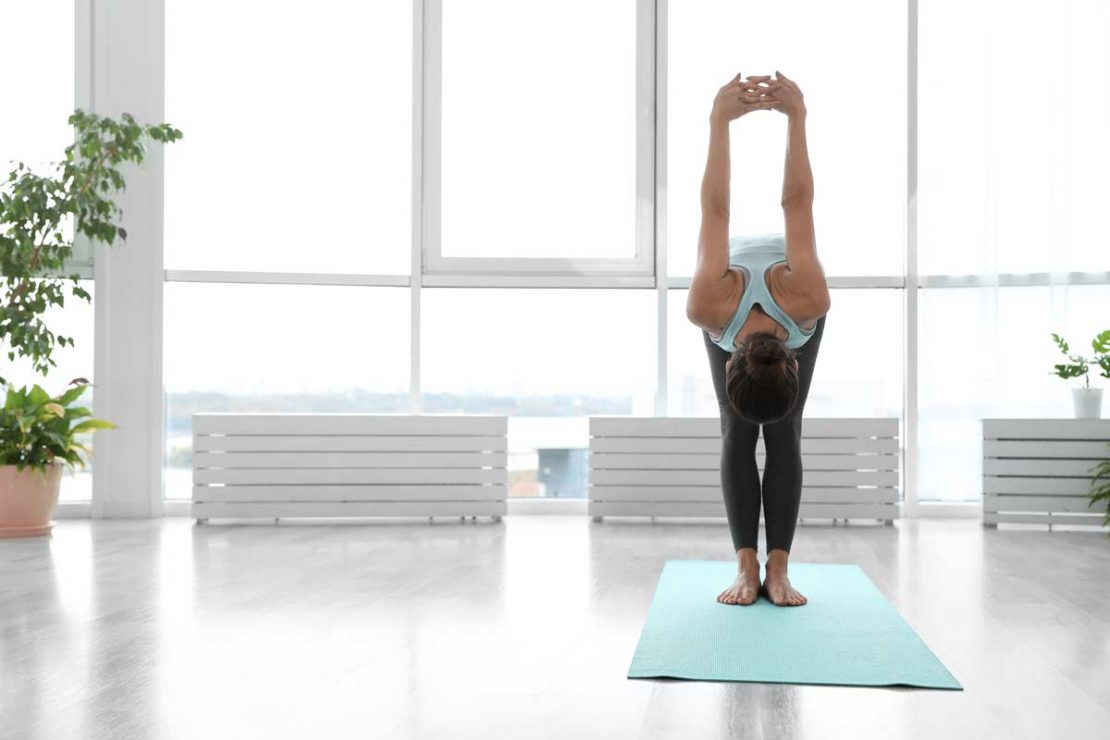
How to do it:
Start by standing up straight, then slowly hinge at the hips and bend forward. Stretch your body and place your palms on the ground and straighten your legs to deepen the stretch. Hold the position and interlace your fingers and arms behind your back, lifting them up and away from your back. Stay in the pose for five breaths, then change the interlace for another five breaths.
If you’re starting with yoga, a yoga equipment starter kit can make things easier. The yoga mat will keep you stable in the pose, and you can use the yoga blocks at the top of your mat under your hands as you bend over to release the strain on tight hamstrings.
Why it works:
This is challenging for those of us with short hamstrings, but it is one of the best for relieving mild depression and stress. And, if you struggle with tension headaches from stored-up stress, this might save you from reaching for the Tylenol. It calms and resets your brain, stimulates the kidneys and liver, and offers a deep stretch for your hips, calves, and hamstrings, which can contract if you’re stressed. Adding the shoulder opener takes the pose one step further by helping to release shoulder tension.
Pose 4 – Bitilasana Marjaryasana (Cat-Cow Pose)
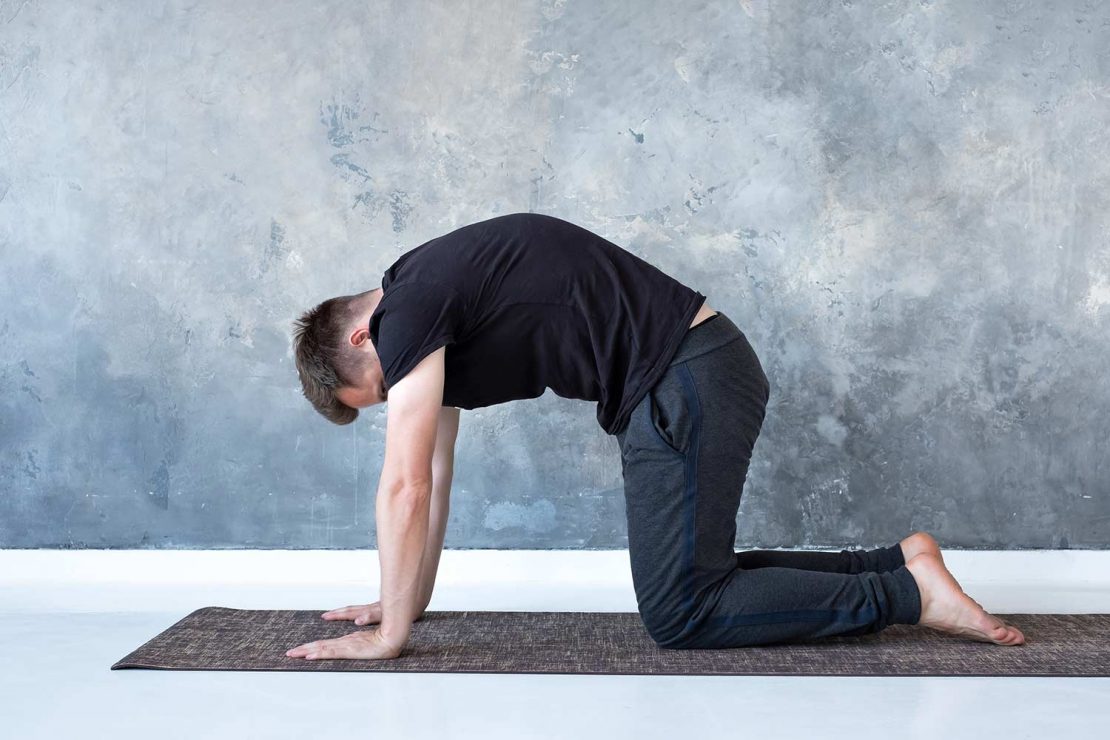
How to do it:
Start on all fours, knees at a 45-degree angle, and shoulders stacked over your hands. Inhale and slowly curve your back, pushing your navel down towards the floor and your heart forward (Cow). Slowly exhale and reverse the movement, bringing your back into an arch as you pull the center of your spine up towards the ceiling (Cat). Repeat five times.
Why it works:
Stress can lead to tension building up in your back, neck, and shoulders, resulting in tension headaches. In addition, many of us spend hours in front of the computer screen every day with poor posture and not enough breaks. If you are particularly stressed, you might skip your lunch break, which will make the shoulder and neck pain even worse. Cat-cow directly targets your neck and shoulder muscles for a stress-relieving stretch and gently massages the spine. It also opens the chest, helps you breathe slowly and deeply, and stimulates your abdominal organs.
Pose 5 – Savasana (Corpse Pose)
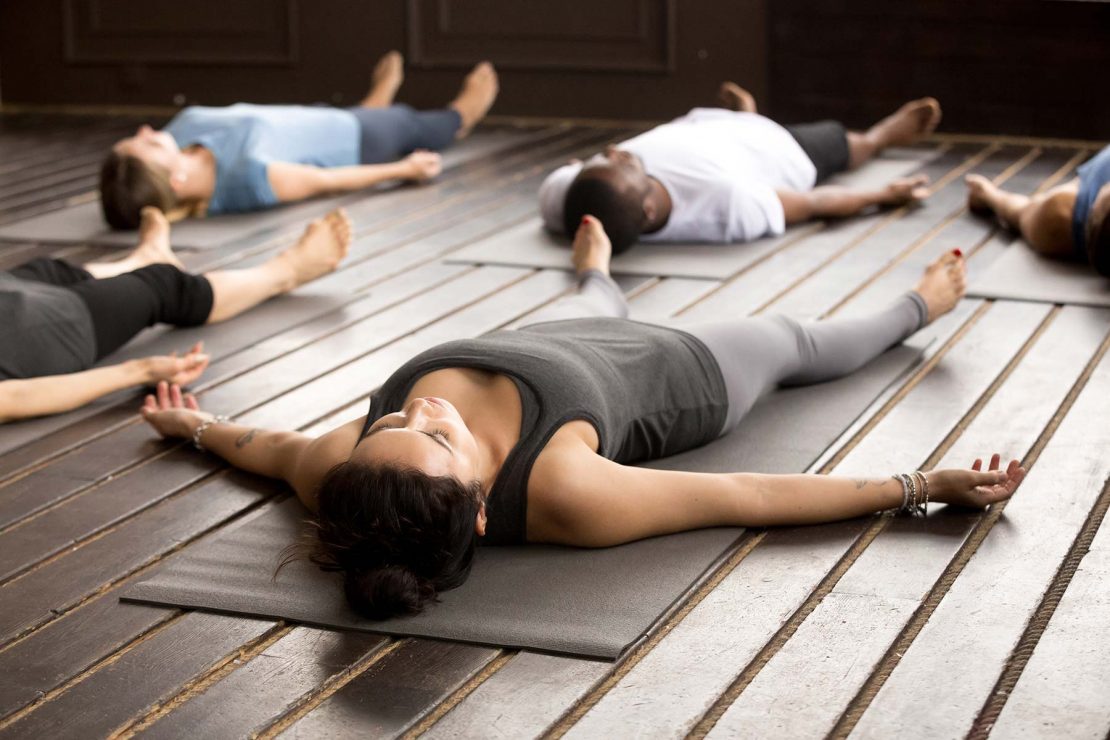
How to do it:
Lie on your back on your yoga mat, part your legs slightly, and allow your feet to fall open to either side. Place your arms next to your body, but not touching your torso with palms facing up and let your fingers curl. Then, tuck your shoulder blades in for additional support and ensure that your whole body is completely relaxed and heavy, including your face. Continue to focus on your breath and breathe naturally. Stay in the pose for between five and ten minutes (set a timer, so you don’t have to get up to check). To release the pose, slowly begin to take deeper breaths, wriggle your fingers and toes and reawaken your body. Stretch your arms overhead and rollover. Using your hands for support, return to a sitting position.
Why it works:
Savasana is often considered the ultimate relaxation pose as it’s one of the few where all muscles are completely relaxed. But, while it looks easy, many consider it to be the most challenging asana. If your mind is racing, you may need to do this as the final pose once you feel calmer. The pose offers several benefits as it calms the mind and reduces stress; it relieves headaches, fatigue, and anxiety — and helps lower blood pressure. It also aids in calming the central nervous system, which aids digestion and immunity.
Other helpful stress-relieving yoga poses:
- Ananda Balasana (Happy Baby Pose) to calm and destress and reduce fatigue.
- Sasangasana (Rabbit Pose), ideal for stress, exhaustion, and when you feel like you can’t cope because it’s comforting while offering a good shoulder release.
- Adho Mukha Svanasana (Downward-Facing Dog) is a favorite in any routine as it helps to relieve back pain and tension caused by stress.
- Anjaneyasana (Low Lunge), if you carry tension in your hip flexors and spend a lot of time sitting at a desk, a gentle, low lunge can help release the stress as well as stretching out the quads.
- Supta Baddha Konasana (Reclined Bound Angle Pose) is a good place to start as it opens up your hips, thighs, and groin, where you may tend to hold stress and tension.
- Garudasana (Eagle Pose), this pose requires concentration and focus, which can allow you to put aside the day’s stresses. It also releases hips and shoulders where emotional tension can accumulate.
Tips to help you get the most from your chillout yoga session:
- Keep your phone out of reach and switch it to silent
- Get comfortable, whether that means putting on your oldest sweatpants or adjusting the temperature of the room
- Routines can be calming, so set aside 15 minutes at the same time every day to go through the poses
- Take long, deep breaths to slow your heart rate
- Focus on your body and how your muscles feel
- Try to remain present, instead of thinking about everything that you still need to get done
Common questions about yoga and stress
Which type of yoga is best for stress relief?
Hatha yoga is considered the best form of yoga for relaxation and relief from stress and anxiety. It’s slower-paced, and the movements are more straightforward, making it a good fit for beginners through to advanced yogis.
Does yoga help anxiety and depression?
Recent studies show that yoga helps you deal with stressful situations better and reduces stress. Like other self-soothing techniques such as meditation, relaxation, and exercise, yoga can also help with anxiety and depression and improve energy.
How does yoga alleviate stress?
Many people turn to yoga to manage mental and emotional problems, among them stress, anxiety, and depression.
It does this by:
- Increasing serotonin production which helps treat depression and boost happiness
- Increasing the relaxation response to combat the stress response through increased heart rate variability
- Reducing tension held in the back, neck, shoulders, hips, and groin
Are some poses better than others for releasing stress?
If your goal is to relieve stress, the most beneficial approach is to focus on grounding, and restorative poses as they promote relaxation. They’re less physically challenging and can be held for more extended periods of time, making you feel more relaxed. For some people, the opposite is true. The challenge of a Bikram or Vinyasa class works out tension from the body and gives your mind something specific to focus on while your subconscious processes the day’s stresses.
Yoga can help you learn more about your mind, emotions, and body in a safe, gentle way. It promotes a sense of calm, focus, and relaxation, allowing you to remain balanced and in control as you face stressful situations in your life.
Even going through these poses for just 15 minutes a day can help you. Whether you choose to do them in the morning as you prepare for a stressful day, in the evening to unwind and process everything that happened, or somewhere in between as you take a moment to find stillness in the busyness.